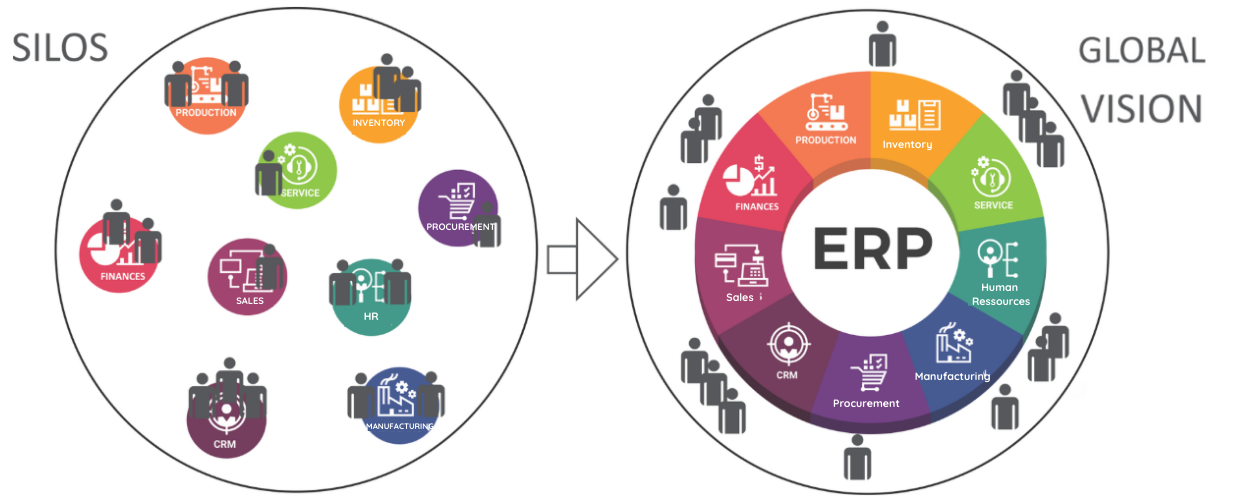From silo to collaboration
It is characterized by the group of people working within the same company, in different departments, who lose sight of the fact that they all share the same mission and objectives, resulting in weakened interdepartmental communication. Imagine the scale of this phenomenon now that many of us are working remotely, cut off from physical contact and usual exchanges!
It is important for business managers to take stock of this issue for the benefit of their organization’s performance. Do you have in place the structure that fosters collaboration and breaks the isolation caused by silos?
The silo effect
Silos create distinct cells. Information exchange is then limited within each cell, and all participants in the company must operate without knowledge of the decisions and actions taken by each entity.
It’s clear that this phenomenon can be costly. Without a global vision, it becomes nearly impossible to understand priorities, and a climate of frustration develops. Time losses, lack of collaboration, and absence of perspective lead to stagnation in knowledge, creativity, and ultimately, profitability.
And who is responsible for putting a stop to this silo work culture? Managers, of course. Remember that if you tolerate behaviors inherent to this mentality, you contribute to its continuation.
Knowledge
Breaking the silo mentality involves, among other things, knowledge. The more informed your employees are, the more aware they will be of the “Big Picture,” and the better they will understand and value their interdependence and the links that connect them. They will realize that their success and the quality of their decisions depend on partnership rather than isolation.
This notion of the “Big Picture,” of visibility across the entire company, lies at the heart of the solution to the silo problem. Among the technological tools that enable access to this culture of global vision are integrated management systems, commonly called ERP (Enterprise Resource Planning). Integrated is the key word here. The ERP gathers all data from all departments into a single place and in real time. This makes it possible for all employees to have a complete and accurate view of the entire company with great precision.

This image clearly demonstrates the differences in information exchange between siloed work and an integrated ERP management system. In the latter, all departments are interconnected, ensuring smooth information flow and providing everyone with a global vision.
In addition to the concept of information accessibility for all, the ERP is an invaluable resource for managers who want to monitor their company step by step through dashboards and the generation of key performance indicators for each department, the connections between them, and the company as a whole. It also enables organizations to structure themselves around proven processes and thereby engage their employees, in a unified way, toward best business practices.
Synergy
Isolation and distancing being the topics of the moment, it is all the more important for managers to ensure that collaboration and synergy are maintained within their organization. How are your employees doing? What are they working on? Are their projects aligned with the overall objectives? Working in silos must be avoided at all costs.
For nearly 20 years, Era Consulting Group has been implementing integrated management systems in companies so they can address these questions and equip themselves to lead in a healthy, collaborative, structured, and efficient way. Era has more than 120 certified experts specialized in all areas of business. Don’t hesitate to contact us.
